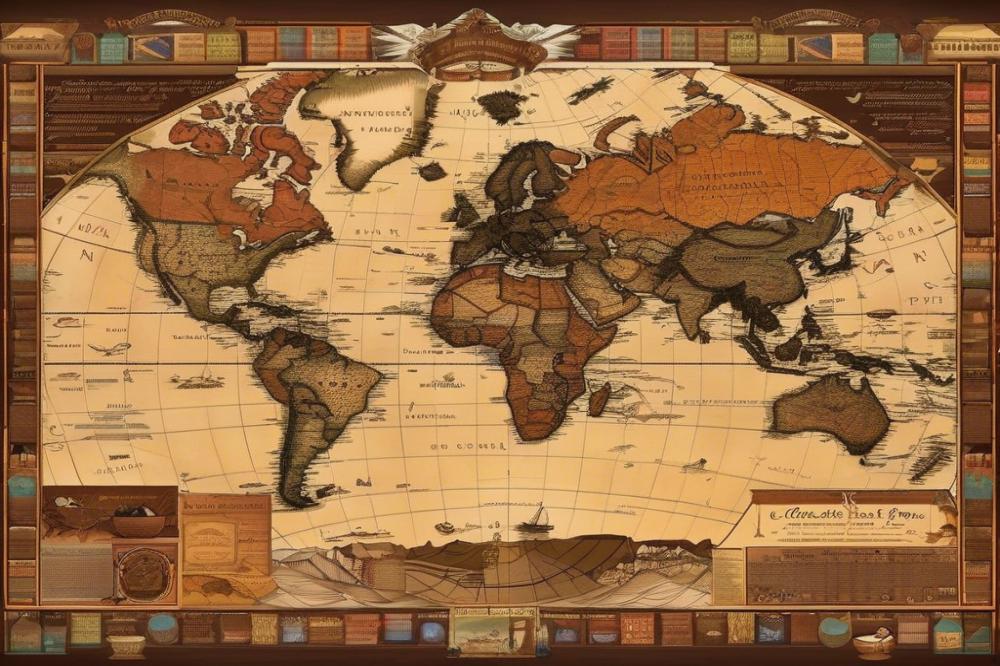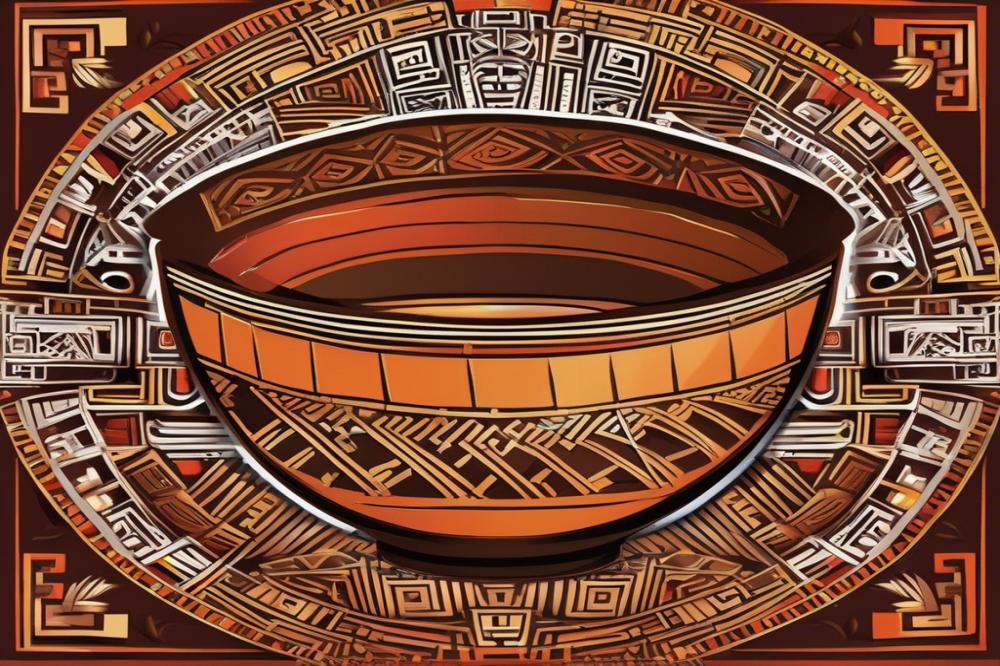chocolate‘s Role in Early globalization
chocolate has made a remarkable mark on history. It started as a drink cherished by indigenous peoples in Mesoamerica. This unique beverage, often consumed during rituals, was a symbol of wealth and status. The beans used to create it were so valuable that they sometimes served as currency. As conquest began, colonization introduced this rich drink to Europe, forever changing its trajectory.
When chocolate arrived in Europe, it transformed from a cultural staple to a sought-after luxury good. Nobility and the elite embraced it, turning it into a sign of prestige. This shift laid the foundation for trade routes that spread this product far beyond its homeland. The burgeoning interest created a demand that spurred agricultural practices in new regions.
Early globalization revolved around exchanges that included not just goods, but ideas and cultures. The introduction of chocolate to various markets led to the mixing of different customs and practices. While indigenous peoples cultivated and prepared it for centuries, Europeans adapted it to their tastes by adding sugar and spices. This cultural exchange enriched the experience, making it more popular among diverse populations.
Trade dynamics shifted as the economy evolved. Entire industries developed around chocolate production, impacting agriculture and international markets. What began as a local specialty grew into an essential commodity in the global economy. The connections made through this simple product played a vital role in shaping the world we know today.
Mesoamerican Origins of Chocolate
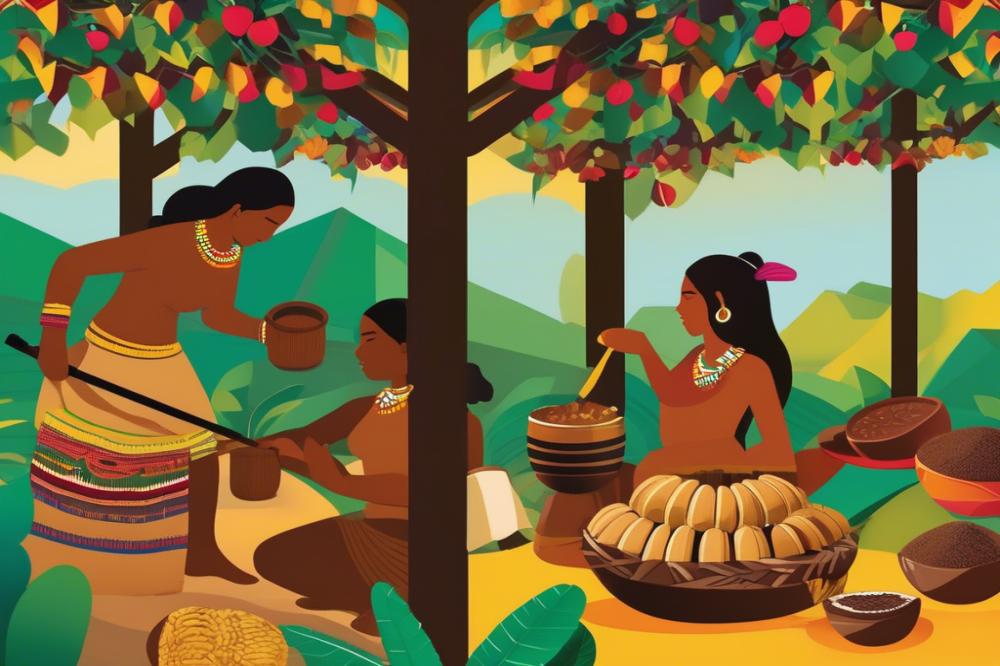
Chocolate has a fascinating history that traces back to ancient Mesoamerica. The Olmecs, a civilization from around 1500 BCE, were among the first to cultivate cacao trees. Cacao beans quickly became more than just food; they transformed into a vital part of culture and trade. Beyond mere agricultural product, they were highly prized for various uses by indigenous peoples.
Among these communities, cacao had multiple significant roles. People enjoyed it as a frothy beverage, often flavored with spices and chilies. Not only did this drink provide refreshment, but it also served as an energy booster. Economic activities around cacao led to its trade across regions. The beans were even used as currency in some societies, reflecting their value in daily life.
Ritual significance added depth to the relationship between cacao and ancient cultures. Often, it was featured in ceremonies and religious practices. It symbolized wealth and high social standing, becoming a luxury good associated with the elite. When certain cacao beverages were consumed, they contrasted sharply with those available to the common folk. This exclusivity only increased its desirability and spiritual connection.
As globalization unfolded through colonization, cacao made its journey to Europe. With time, the drink that once held spiritual importance in Mesoamerica transformed into a fashionable indulgence among European elites. This shift marked the beginning of cultural exchange, as cacao influenced tastes and economies far beyond its Mesoamerican roots.
Trade networks expanded significantly, linking diverse peoples and enriching economies. The agricultural aspects of cacao cultivation also evolved during this period. As demand surged, its production required more land and labor, leading to changes in social structures. As a result, the history of cacao not only illustrates a delicious treat but also showcases a catalyst for economic and cultural connections across continents.
The Journey to Europe
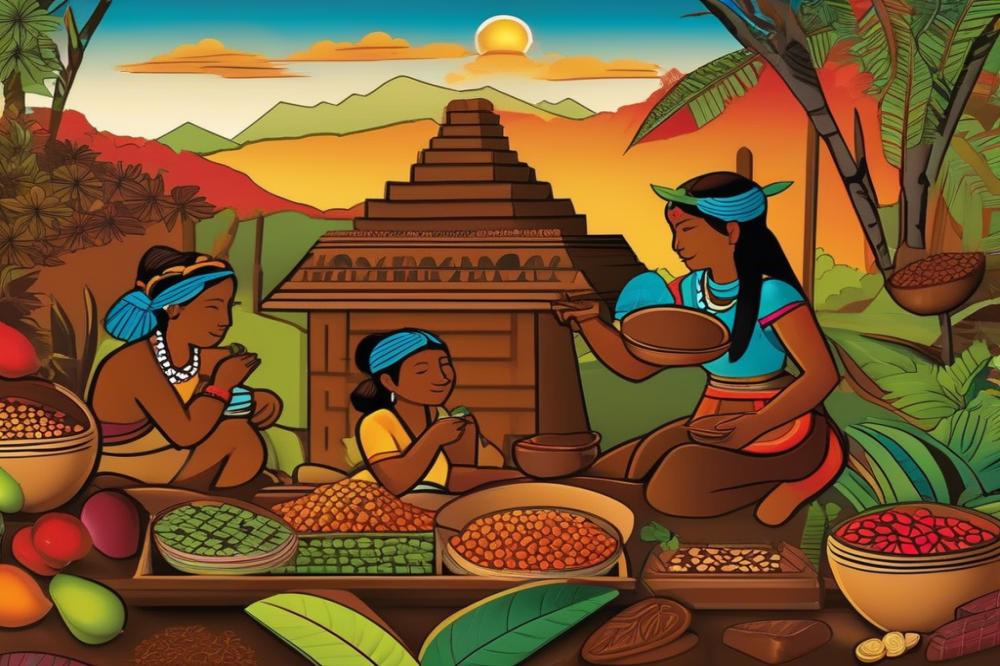
European explorers first encountered the delightful beverage made from cacao beans in Mesoamerica during the 16th century. They were amazed by how the indigenous peoples used it in rituals and everyday life. This exotic drink fascinated many who tasted it, leading to curiosity about its origins and uses.
The story takes an important turn when Spanish explorers introduced chocolate to Spanish royalty. It quickly became a favorite among the elite in the Spanish court. Nobles and aristocrats savored its rich flavor, often sweetening it with sugar, a new ingredient brought from the New World. Soon, this once simple drink transformed into a symbol of status.
As trade routes expanded, this luxury good made its way across Europe. Countries like France and England soon followed suit, embracing the new taste sensation. The emergence of chocolate houses in cities like London offered a social venue where the wealthy could enjoy their newfound passion. Agriculture shifted to meet the rising demand, and plantation systems established in the colonies thrived. Cacao production became a key player in the economy, drastically impacting international trade.
The introduction of chocolate sparked a broader cultural exchange. It encouraged the mixing of traditions and customs from various regions. As Europeans embraced the rich beverage, they were unwittingly participating in a cycle that would influence relationships between continents. Emerging as a luxury item, it helped define social hierarchies and cultural practices in European societies.
Trade and Colonization
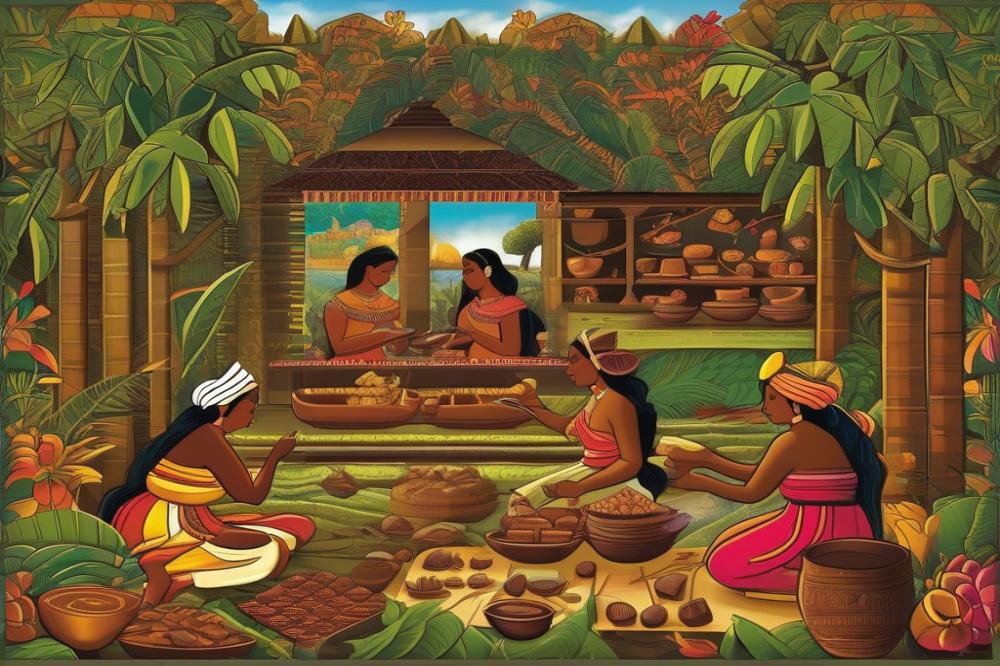
Colonization dramatically changed cacao cultivation. European empires discovered the valuable cacao bean while exploring Mesoamerica. They found that this crop held great potential for profit. Initially, indigenous peoples cultivated cacao for centuries. Its importance went beyond agriculture; it was part of their culture.
As Europeans took control, they recognized its value in trade. The luxurious drink made from cacao became popular in Europe. Societies began associating it with wealth and status. The demand soared, driving empires to seek control over cacao production.
Establishing cacao plantations soon became a priority. The Caribbean and parts of South America turned into centers for cacao agriculture. Colonial powers cleared vast areas of land for this purpose. They relied heavily on enslaved labor from Africa and local populations, disrupting traditional farming practices.
This shift affected the economy significantly. Wealth from cacao trade boosted European nations. The relationship between colonizers and indigenous peoples often turned exploitative. Those who had once cultivated cacao for their own use found themselves working under foreign rules.
Through trade, cultural exchange occurred, but it was lopsided. European tastes influenced local practices. Eventually, cacao’s role in society expanded well beyond its origins. It became firmly embedded in the global economy, reshaping how people viewed agriculture and luxury goods.
Economic and Agricultural Perspectives
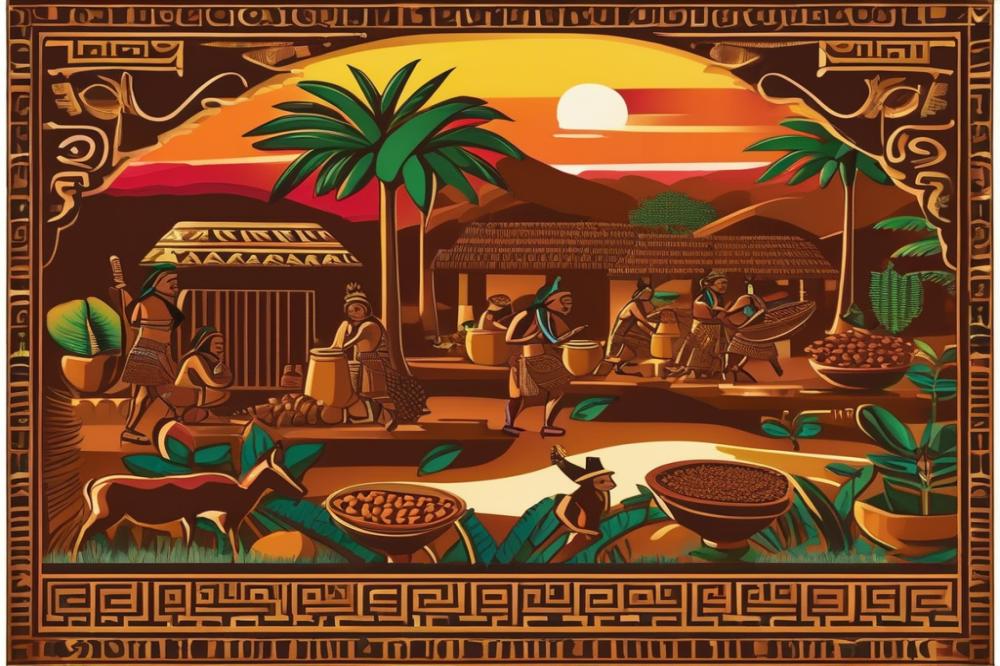
Chocolate’s rise to prominence significantly impacted colonial economies. Initially, it became a highly sought-after luxury good in Europe. This demand led to the establishment of cacao plantations in the Americas. Countries saw an opportunity to boost their wealth and expand trade routes. The rich history of cacao cultivation began in Mesoamerica, where indigenous peoples originally valued it for its unique properties.
Shifts in agricultural practices were necessary to meet the growing appetite for this prized commodity. Large-scale farming methods emerged, focusing heavily on cacao production. Colonizers introduced new techniques and crops to increase yields. As plantations expanded, they often disregarded the sustainability of local ecosystems. This change not only drove economic growth but also altered traditional farming in the regions where cacao flourished.
The consequences of this agricultural shift were profound. The demand for labor skyrocketed, leading to the exploitation of indigenous peoples. Many faced harsh working conditions on plantations where they labored under severe oversight. Enslaved individuals from Africa were also transported to work the fields. This created a dark chapter in history, revealing the human cost associated with luxury goods.
Trade routes flourished as chocolate became an integral part of European culture. Colonial powers capitalized on the economies driven by cacao. The cultural exchange brought new flavors and customs back to Europe, further embedding cacao into society. However, the benefits of this trade were often unequally shared, favoring colonial powers far more than the regions producing it.
In summary, the journey of cacao from Mesoamerica to European markets highlights the complex interplay between agriculture and economy during colonial times. It showcases how luxury goods shaped trade and cultural exchange, while also reminding us of the exploitation behind this beloved treat. Understanding these perspectives helps us appreciate both the richness and the complexities of chocolate’s impact on early globalization.
Cultural Exchange and Chocolate
The fascinating journey of cacao began in Mesoamerica. Indigenous peoples cultivated this crop for centuries, using it in ceremonies and as a beverage. Upon colonization, European powers took an interest in this unique product. The rich and complex flavors of cacao quickly drew attention across the ocean. Cacao-based drinks influenced European culture and cuisine, paving the way for new culinary traditions.
Early European adoption of cacao involved significant adaptation. Sweetening bitter cacao drinks transformed them into delightful beverages. Spices and sugar from colonized lands found their way into mugs, creating luxurious drinks. Over time, these concoctions became symbols of wealth and sophistication. Society began to view cacao as a sign of status, a representation of good taste and financial power.
Trade networks expanded, bringing cacao to European tables. Major cities buzzed with the latest trends in style and flavor. Chocolate houses emerged, where the elite gathered to enjoy this beverage. These establishments were more than places to drink; they became cultural hubs. Men and women mingled, exchanged ideas, and discussed politics, all while sipping on a drink made from cacao.
Agriculture played a crucial role as demand for cacao soared. Plantations across the Americas produced large quantities of this sought-after product. The economy shifted as cacao became one of the most traded luxury goods of the time. This trade not only changed lives in Europe but also had profound effects on the indigenous peoples in Mesoamerica. Their cultural practices faced challenges while the world embraced this new culinary delight.
The influence of cacao spread beyond just taste. It shaped identity and status in various social circles. A hot drink could symbolize cultural affiliation or social rank. Those who could afford cacao beverages elevated their standing, while others looked on with desire. The interplay of culture and economy drove a rich exchange between continents, revealing how deeply intertwined the history of cacao and globalization became.
Chocolate in the Modern Era
Throughout history, cacao has transformed from a local Mesoamerican treasure to a worldwide sensation. The evolution into mass production began in the 19th century. This innovation made chocolate accessible to everyone, not just the elite. As a result, factories sprang up across Europe and the Americas. Mass production facilitated a dramatic increase in consumption, fueled by marketing strategies that positioned chocolate as a luxury good.
Globalization played a crucial role in popularizing various chocolate brands. Iconic names like Hershey’s, Cadbury, and Lindt emerged, taking their products to every corner of the globe. The trade of cacao beans expanded beyond their origins. Countries in Africa and South America became significant producers of cacao, contributing to the world supply. Global connections allowed diverse flavors and styles to flourish, showcasing a blend of cultures and traditions.
Modern implications for cacao farmers are complex. Many workers, often indigenous peoples, face harsh conditions and low wages. As demand for chocolate continues to rise, concerns about sustainability come to the forefront. The agriculture of cacao involves significant challenges, including climate change and deforestation. Changes are needed to develop fair trade practices that support local communities. Ensuring that farmers receive a living wage is vital for a healthy economy. The pursuit of ethical sourcing has become paramount for many brands. Consumers increasingly seek out products that reflect their values related to sustainability and fair treatment of labor.
Final Thoughts on Chocolate as a Connector Between Societies
Reflecting on the role of this beloved sweet in early globalization reveals its significant impact. This food not only traveled across continents but also influenced cultures and economies. Its journey from Mesoamerican rituals to European nobility marked a turning point in social dynamics. Trade routes expanded and new markets emerged, paving the way for a truly interconnected world.
People from different backgrounds shared their love for this treat, leading to cultural exchanges that enriched societies. Diverse recipes and traditions evolved, showcasing creativity and adaptation. Commerce flourished as nations sought to capitalize on its popularity, transforming economies and enriching lives.
As history unfolded, this ingredient became a symbol of connection. It bridged gaps between varying cultures, making it a compelling narrative of human interaction. Today’s global marketplace continues to thrive on these early exchanges, reminding us of the power of simple pleasures.
In conclusion, the story of this delightful indulgence goes beyond taste. It illustrates humanity’s ability to connect and adapt. By understanding its role in the past, we can appreciate how it links us now. From ancient rituals to modern treats, this food remains a sweet reminder of our shared history.

